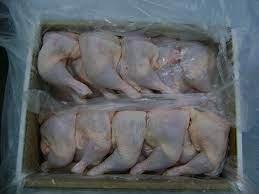 According to the October 14th USDA-FAS GAIN Report TC2021-0011, domestic chicken production in the United Arab Emirates (UAE) will represent 11.2 percent of total supply in calendar 2022. Due to high feed costs and COVID-related restraints on expansion of the economy, production will remain at 56,000 metric tons in 2022, unchanged from 2021. The UAE will import 445,000 metric tons of chicken in 2022 up 7.2 percent from 2021. Given the UAE population of 10 million, per capita consumption is 100 lbs.
According to the October 14th USDA-FAS GAIN Report TC2021-0011, domestic chicken production in the United Arab Emirates (UAE) will represent 11.2 percent of total supply in calendar 2022. Due to high feed costs and COVID-related restraints on expansion of the economy, production will remain at 56,000 metric tons in 2022, unchanged from 2021. The UAE will import 445,000 metric tons of chicken in 2022 up 7.2 percent from 2021. Given the UAE population of 10 million, per capita consumption is 100 lbs.
It is noted that only 20 percent of population of the UAE are Emiratis with the remaining population comprising close to 100 nationalities predominately from India (28 percent) and Pakistan (12 percent) with Westerners comprising 5 percent of residents. With the current decline in construction estimated at 45 percent from 2019, many temporary workers at the low end of the socio-economic scale have returned to their homelands in Pakistan and Bangladesh. The level of reverse migration is significant with respect to U.S. exports since leg quarters are mostly consumed by this demographic. The U.S. market share of chicken imports declined from 17 percent in 2020 to 11 percent in 2021, attaining 24,000 metric tons.
 The import market is dominated by Brazil with a 70 percent market share over the first half of 2021 amounting to 148,000 metric tons mostly whole birds at 2.2 to 2.7 lbs. The UAE benefited from the precipitous ban by Saudi Arabia on exports from a number of plants in Brazil in May 2021. This forced exporters in Brazil to divert product to the UAE presumably at a reduced unit price. The quantity exported by the U.S. to the UAE declined by 41 percent in 2021 compared to the previous year with Brazil losing 4 percent over a considerably larger quantity. Ukraine holds a five percent market share in 2021 but was down 55.3 percent due to outbreaks of avian influenza. Neighboring Saudi Arabia increased exports to the UAE by 23 percent to capture four percent of the market.
The import market is dominated by Brazil with a 70 percent market share over the first half of 2021 amounting to 148,000 metric tons mostly whole birds at 2.2 to 2.7 lbs. The UAE benefited from the precipitous ban by Saudi Arabia on exports from a number of plants in Brazil in May 2021. This forced exporters in Brazil to divert product to the UAE presumably at a reduced unit price. The quantity exported by the U.S. to the UAE declined by 41 percent in 2021 compared to the previous year with Brazil losing 4 percent over a considerably larger quantity. Ukraine holds a five percent market share in 2021 but was down 55.3 percent due to outbreaks of avian influenza. Neighboring Saudi Arabia increased exports to the UAE by 23 percent to capture four percent of the market.
The FAS post Dubai noted that Brazil packs whole birds and portions in 12 kg cartons compared to 20 kg for U.S. product. Local distributors find the smaller pack more convenient as they are able to service restaurants. In comparison to Brazil and the Ukraine, U.S. legs are generally too large for single plate servings in restaurants.
Marketing chicken in the Mideast requires close conformity to standards imposed by authorities in importing nations. These include strict halal requirements that in fact vary from nation to nation, freedom from antibiotics and animal protein in feeds and specific labeling. The U.S. is at a disadvantage in making available leg quarters from birds weighing over 7 lbs live since this is a commodity product frequently failing to meet specifications of both consumers in importing nations and ever changing health and quality regulations. Notwithstanding the restraints of marketing a commodity, the National Chicken Council breakdown of exports during the first eight months of 2021 recorded a volume of 2,395,519 metric tons up 5.3 percent from the equivalent period in 2020. Unit value was up 17.8 percent for “chicken parts,” predominantly leg quarters, at $1,139 per metric ton.